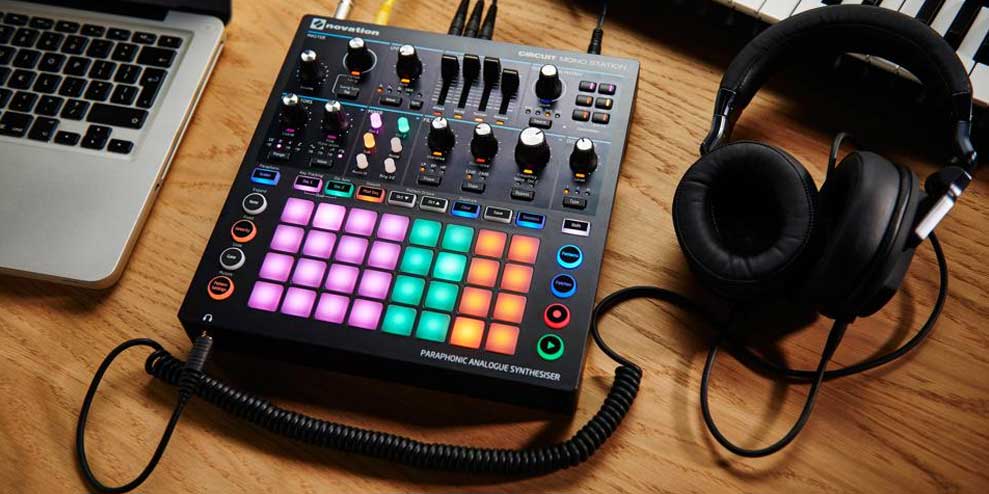Among the shortcomings of short-form video service Quibi was a decision at launch by the Jeffrey Katzenberg-led company to wall off its content assets. The move rendered it impossible for viewers to cut and paste clips, create memes, share snippets.
The misstep was quickly corrected. Why? Because if fans can’t interact with content, if they can’t own and share a piece of the experience—you’ve just hamstrung your best brand ambassadors.
Audio branding, on the verge of a colossal evolution, is wisely beginning to tap into the power of the creator-driven economy.
Audio can be the key to recognition and recall, but for the most part brands have been simply repeating, often shouting, the same musical elements at consumers with limited success. Now, a parcel of companies, including startups Vurbl and Blerp, want to help brands embrace user-generated content—a cornerstone of our increasingly platform-based ecosystem.
Thornton knows a thing or two about the power of unlocking a brand’s sonic assets and empowering consumers to authentically engage with them. His company created the revolutionary open-sourced soundtrack to elevate Pantone’s 2020 color of the year, Classic Blue, and is collaborating with Pantone in a similar capacity for 2021.
For the Classic Blue multisensory campaign, Audio UX created and then released all audio elements—some 145 micro-musical sounds in all—free to the public in conjunction with cloud-based music platform Landr.
To date, there have been nearly 2 million sample downloads from the color of the year sample pack, and it is the top-performing collection on the Landr platform.
“Seeing people who were completely not immersed in the brand interact with these elements and use them in their own music—it was just a fascinating process for us,” Thornton says. “Ordinarily no one outside the inner circle of a brand is going to get access to these elements. But people really rallied around it. They loved taking these core micro elements and remixing them and interacting with them and putting their own spin on what they thought the color of the year sounded like.”
The success validated one of Audio UX’s core missions: “How do we develop the same kind of affinity for a brand you may have for your favorite music artist? This is where I believe audio and music can go for brands,” he says. Among other company clients are Simplehuman, Ecobee and a major bank for which it’s developing a top-down sonic branding initiative featuring earcons, an audio logo and branded music.
“YouTube of Audio” Aspirations
With a library of millions of primarily user-generated audio assets and a just-completed $1.3 million pre-seed financing round, Vurbl launches this quarter with the lofty aspiration of becoming the YouTube of audio.
Assets include entertainment, news, spoken-word, meditation, comedy and religious sound snippets, and while they’re rooted in the consumer realm, the LA-based company has a much loftier goal—revolutionizing the world of digital audio advertising and serving up a scalable, real-time programmatic audio ad platform.
“We are creating a centralized place for free audio of all types,” says founder and CEO Audra Gold. “Given our breadth and depth of audio content, we’ll be building a very large audience across all demographics and locations. Our platform streams the audio in real time, providing programmatic ad inventory before, during and after someone consumes audio, similar to what YouTube provides for the programmatic video space.”
User-generated content enables businesses and consumers to create small to massive highly engaged fan bases, Gold says, creating an army of brand influencers.
“Influencer content is an incredibly valuable type of content for advertisers to buy into because the consumers of that content tend to be very engaged and loyal—resulting in great brand recall on those ads. Brands will benefit from being able to hyper-target around our vast content verticals and personalities to the ears of the most relevant and timely audiences,” adds Gold, who previously founded product consultancy Product N and led product teams at Rubicon Project RUBI +4.1% and Pluto TV, among others.
An Audio Emoji Repository
User-generated content also is the primary driver behind startup platform Blerp. The company has a cache of more than 500,000 unique sound bites, which it describes as audio emojis, and thousands of user-created soundboards. It recently closed a funding round with Amazon’s AMZN -3% Alexa Fund, Kickstart Seed Fund and others that back the platform’s ability to insert audio expression to any moment via live-streams, messaging apps and voice chats.
Launched in 2018, Blerp had a fortuitous integration with Twitch at the beginning of this year that has raised the company’s profile considerably. It now registers millions of fan engagements per month, more than 10 times that of Giphy. Like Vurbl, its end game is partnering with brands to help extend their sonic footprint via an army of audio ambassadors.
“We’re using all of this momentum in videogames and live-streaming to grow our platform and create that flywheel where people are converting to the idea of sharing sound,” says co-founder Aaron Hsu.
“Where brands and creators can really get excited is, as we continue to upgrade those searches and those shares of sounds, there’ll be a huge opportunity to monetize their unique voice on Blerp. When we get to 10 million, 50 million, 100 million searches a month, that’s were brands are able to come—very similar to Gif and Tenor—and advertise in those searches.”
Co-founder Derek Omori concurs: “The brand-driven economy we are building is where a company can find value in our platform because our distribution brings new ways to monetize. We can really be their digital voice on the Internet. That’s a powerful way to showcase your brand.”
This article first appeared in www.forbes.com
Seeking to build and grow your brand using the force of consumer insight, strategic foresight, creative disruption and technology prowess? Talk to us at +971 50 6254340 or mail: engage@groupisd.com or visit www.groupisd.com/story


